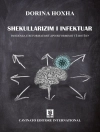Regression diagnostics are methods for determining whether a regression model that has been fit to data adequately represents the structure of the data. For example, if the model assumes a linear (straight-line) relationship between the response and an explanatory variable, is the assumption of linearity warranted? Regression diagnostics not only reveal deficiencies in a regression model that has been fit to data but in many instances may suggest how the model can be improved. The Second Edition of this bestselling volume by John Fox considers two important classes of regression models: the normal linear regression model (LM), in which the response variable is quantitative and assumed to have a normal distribution conditional on the values of the explanatory variables; and generalized linear models (GLMs) in which the conditional distribution of the response variable is a member of an exponential family. R code and data sets for examples within the text can be found on an accompanying website.
Tabella dei contenuti
Series Editors Introduction
About the Author
Acknowledgements
Chapter 1. Introduction
Chapter 2. The Linear Regression Model: Review
The Normal Linear Regression Models
Least-Squares Estimation
Statistical Inference for Regression Coefficients
The Linear Regression Model in Matrix Forms
Chapter 3. Examining and Transforming Regression Data
Univariate Displays
Transformations for Symmetry
Transformations for Linearity
Transforming Nonconstant Variation
Interpreting Results When Variables are Transformed
Chapter 4. Unusual data
Measuring Leverage: Hatvalues
Detecting Outliers: Studentized Residuals
Measuring Influence: Cook’s Distance and Other Case-Deletion Diagnostics
Numerical Cutoffs for Noteworthy Case Diagnostics
Jointly Influential Cases: Added-Variable Plots
Should Unusual Data Be Discarded?
Unusual Data: Details
Chapter 5. Non-Normality and Nonconstant Error Variance
Detecting and Correcting Non-Normality
Detecting and Dealing With Nonconstant Error Variance
Robust Coefficient Standard Errors
Bootstrapping
Weighted Least Squares
Robust Standard Errors and Weighted Least Squares: Details
Chapter 6. Nonlinearity
Component-Plus-Residual Plots
Marginal Model Plots
Testing for Nonlinearity
Modeling Nonlinear Relationships with Regression Splines
Chapter 7. Collinearity
Collinearity and Variance Inflation
Visualizing Collinearity
Generalized Variance Inflation
Dealing With Collinearity
*Collinearity: Some Details
Chapter 8. Diagnostics for Generalized Linear Models
Generalized Linear Models: Review
Detecting Unusual Data in GLMs
Nonlinearity Diagnostics for GLMs
Diagnosing Collinearity in GLMs
Quasi-Likelihood Estimation of GLMs
*GLMs: Further Background
Chapter 9. Concluding Remarks
Complementary Reading
References
Index
Circa l’autore
John Fox received a BA from the City College of New York and a Ph D from the University of Michigan, both in Sociology. He is Professor Emeritus of Sociology at Mc Master University in Hamilton, Ontario, Canada, where he was previously the Senator William Mc Master Professor of Social Statistics. Prior to coming to Mc Master, he was Professor of Sociology, Professor of Mathematics and Statistics, and Coordinator of the Statistical Consulting Service at York University in Toronto. Professor Fox is the author of many articles and books on applied statistics, including /emph{Applied Regression Analysis and Generalized Linear Models, Third Edition} (Sage, 2016). He is an elected member of the R Foundation, an associate editor of the Journal of Statistical Software, a prior editor of R News and its successor the R Journal, and a prior editor of the Sage Quantitative Applications in the Social Sciences monograph series.












